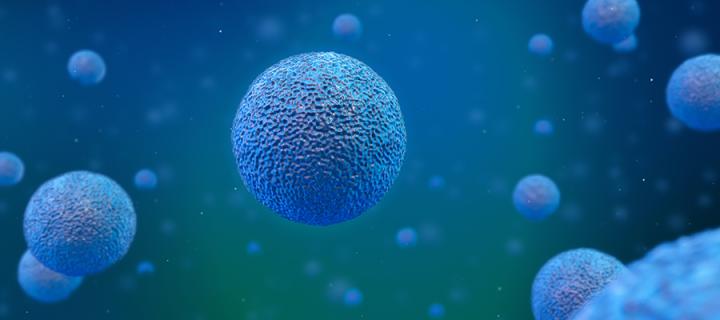Improved labelling for stem cell-based therapy
January 2017: Study identifies new approach to magnetising cells which may lead to improved stem-cell based therapeutics.

Cell-based therapy is an emerging area of regenerative medicine which offers the promise of improved treatments, in comparison to conventional pharmaceuticals, for a range of diseases. Stem or progenitor cells are given to a patient, usually via the blood stream, and have wide therapeutic potential for tissue repair and in cancer therapy.
However, difficulties exist in tracking the cells to ensure they reach the desired target in the body and are retained and incorporated into the appropriate tissue. The use of stem cells to support tissue repair is facilitated by labelling the therapeutic cells with magnetic nanoparticles (MNPs) which can be tracked by MRI. This also provides the potential to target cells to sites of injury or surgery to facilitate tissue repair.
Current methods for magnetising human mesenchymal stem cells (MSCs) use artificial MNPs and are difficult to optimise. Disadvantages range from variable uptake of MNPs by the cells, to cellular damage, and loss of MNPs when the cells divide and proliferate.
An alternative approach has been identified by CGEM’s Professor Donald Salter and collaborators, published recently in Nature’s Scientific Reports.
In this study, researchers have successfully shown for the first time that it is possible to induce MSCs to synthesise MNPs directly. This occurs when these cells are modified to express a gene that has previously been identified only in rare forms of magnetic bacteria.
The ability to induce stem cells to produce magnetic nanoparticles is a significant advance, enabling magnetic tracking and targeting of these cells to areas of tissue damage for repair. Importantly, MNP-bearing cells may also show benefit as a delivery system for magnetic hyperthermia based cancer therapies.
The magnetic MSCs generated using this novel approach can be imaged and tracked by standard scanning modalities such as MRI and importantly the cells are still able to differentiate into specialised tissue cells such as bone and cartilage and so have the potential to repair injured tissues.
Related Links:
Journal article: Elfick et al., Scientific Reports 7 (doi:10.1038/srep39755)


